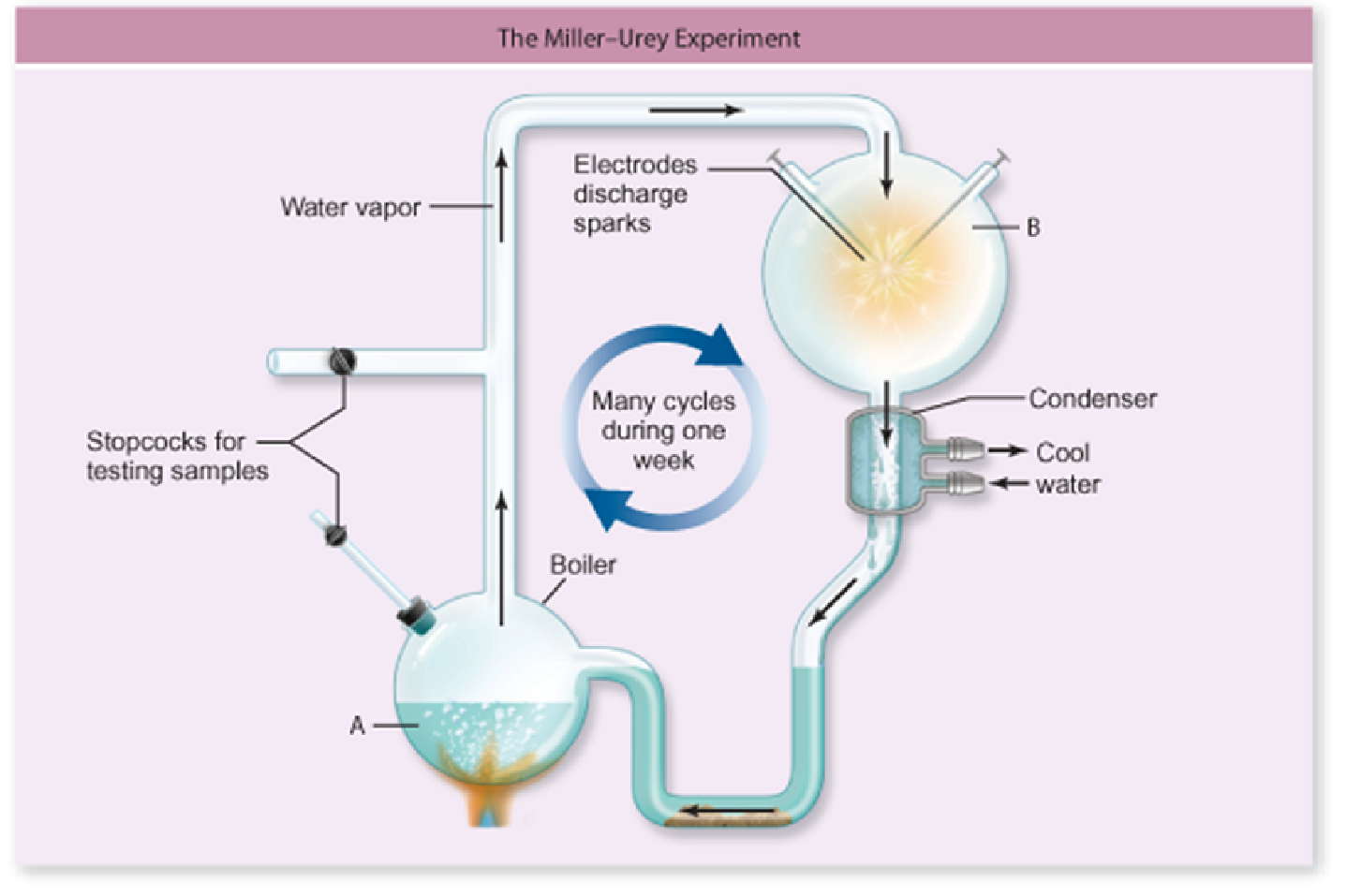Positive assortative mating in a population will:a
produces more mutations each generation.
b. causes natural selection.
c. changes allele frequencies.
d. stabilizes genotype frequencies.
e. increases homozygosity.
E
You might also like to view...
Two dihybrid pea plants (both tall and with purple flowers) are mated. The cross resulted in 9866 progeny, of which 5550 were tall with purple flowers. What are the expected ratios of the other phenotypic classes?
A. 1850 Short/white flower 616 Tall/white flower 1850 Short/purple flower B. 1850 Short/white flower 1850 Tall/white flower 1850 Short/purple flower C. 616 Short/white flower 1850 Tall/white flower 1850 Short/purple flower D. 5550 Short/white flower 5550 Tall/white flower 5550 Short/purple flower
The apparatus in the figure was used by Stanley Miller and Harold Urey to study the origin of life on Earth. What compound was excluded from the apparatus so that it would form a reducing atmosphere?

A. CO2
B. O2
C. NH3
D. H2
E. H2O
Members of the lineage ____ are mostly freshwater parasites. Called leeches, they are dorsoventrally
flattened and do not have septa.
a. Hirudinea b. Polychaeta c. Monogenoidea d. Cestoda e. Oligochaeta
The formation of offspring carrying genetic information from a single parent is called
A) asexual reproduction. B) sexual reproduction. C) regeneration. D) spontaneous generation. E) All of these